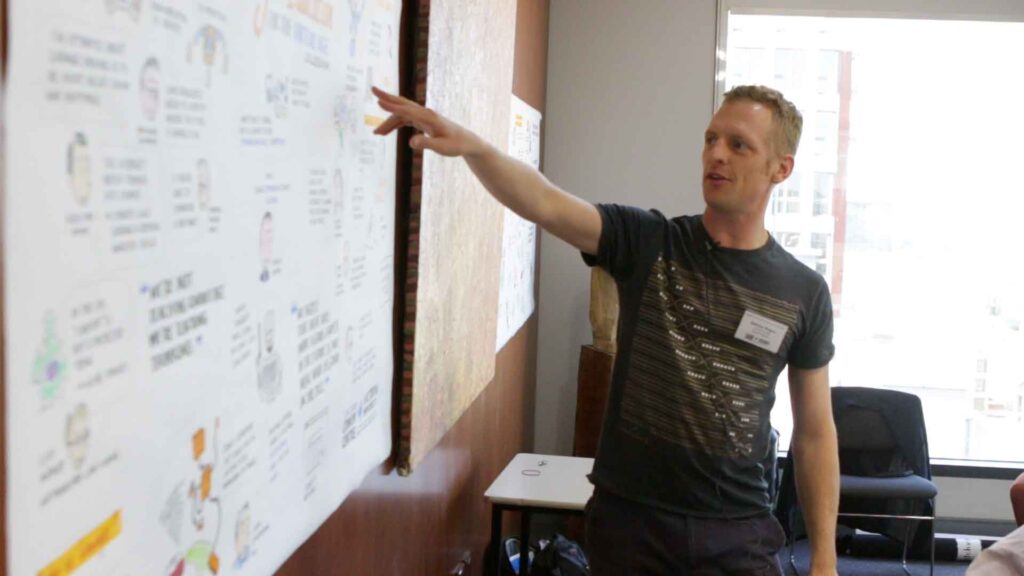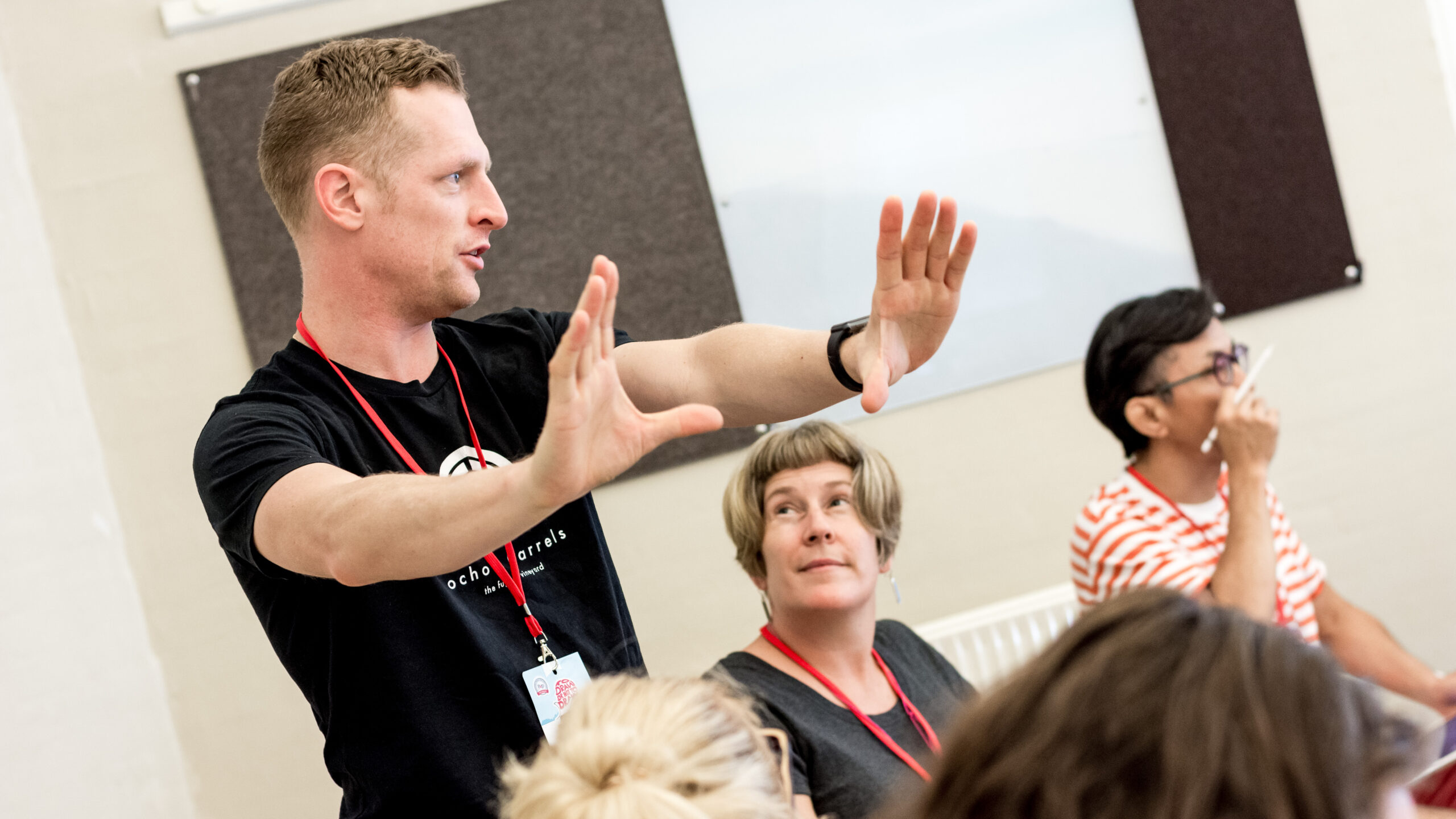In an age where information overload is the norm, finding effective ways to communicate and collaborate is paramount. Enter graphic facilitation, a dynamic and engaging method that transcends traditional text-based communication. But what exactly is graphic facilitation, and how can it transform your meetings and workshops? Let’s dive in.
What is Graphic Facilitation?
Graphic facilitation, often referred to as visual facilitation, is the art of capturing and conveying complex ideas and discussions through a combination of words and visuals. It’s a powerful technique that transforms conversations into visually compelling narratives, fostering understanding, engagement, and creativity.
At its core, graphic facilitation is about turning ideas and discussions into tangible visual representations. This can take the form of mind maps, diagrams, illustrations, or other visual aids that bring concepts to life. The goal is to make information more accessible, memorable, and engaging.

What Does a Graphic Facilitator Do?
Graphic facilitators, often called “graphic scribes” or “visual storytellers,” are the architects behind this innovative method. Their role is multi-faceted and pivotal to the success of meetings, workshops, and conferences. Here’s a glimpse into what graphic facilitators do:
- Active Listening: Graphic facilitators are exceptional listeners. They’re tuned in to the conversations, extracting key insights, ideas, and themes as they unfold.
- Visual Translation: Armed with markers and a keen sense of design, they transform spoken words into captivating visuals. This can include creating mind maps to illustrate relationships, flowcharts to depict processes, or whimsical illustrations to convey abstract concepts.
- Engagement: As graphic facilitators work their magic, participants become actively engaged. The visual representation of ideas serves as a focal point, encouraging deeper discussions and participation.
- Clarity and Retention: The visuals produced during a session serve as lasting artifacts. Participants leave with a clear understanding of discussed topics, and these visuals aid in knowledge retention long after the meeting concludes.
What Are the Principles of Graphic Facilitation?
Successful graphic facilitation is grounded in a set of principles that guide the process and ensure its effectiveness. Here are some key principles of graphic facilitation:
- Clarity: The visuals created must be clear and easy to understand. Graphic facilitators distill complex information into simple, accessible graphics.
- Engagement: The visuals should engage participants and encourage them to interact with the content. This interaction leads to deeper discussions and better retention.
- Adaptability: Graphic facilitators must adapt their approach to meet the specific needs and objectives of each session. No two meetings are the same, and flexibility is key.
- Visualization: The power of graphic facilitation lies in its ability to turn abstract ideas into concrete visuals. This visualization aids in comprehension and retention.
- Storytelling: Graphic facilitators are essentially visual storytellers. They craft narratives using images and words, making the content more engaging and memorable.
Graphic Facilitation for Productive Team Meetings
Now that we’ve explored what graphic facilitation is and the role of graphic facilitators, let’s delve into how this technique can supercharge your team meetings and boost productivity.
Enhanced Communication
Team meetings often involve discussing complex ideas, strategies, or project plans. Graphic facilitation enhances communication by providing a visual dimension to these discussions. When words are complemented with visuals, participants can grasp the information more effectively.
Fostering Creativity
Team meetings are the ideal breeding ground for creativity. Whether brainstorming ideas or solving problems, graphic facilitation encourages team members to think outside the box. Visual representations stimulate creative thinking and inspire innovative solutions.
Improved Engagement
Let’s face it; not all meetings are riveting. However, with graphic facilitation, meetings become dynamic, visually stimulating experiences. Participants are drawn into the process, making them more engaged and motivated to contribute.
Efficient Decision-Making
When complex data or ideas are presented visually, decision-makers can quickly understand the information needed to make informed choices. Graphic facilitation simplifies complex concepts, aiding in efficient decision-making.
Creating Tangible Artifacts
The visual recordings produced during team meetings serve as tangible artifacts. They can be shared, reviewed, and used as reference materials long after the meeting has concluded. This ensures that the ideas and decisions made during the meeting remain accessible.
Why Would You Not Plan For Success?
In conclusion, graphic facilitation is a game-changer for team meetings and collaborative sessions. By leveraging the expertise of graphic facilitators, you can enhance communication, foster creativity, improve engagement, aid decision-making, and create lasting artifacts that continue to inspire and inform your team.
Ready to supercharge your next team meeting with graphic facilitation? Contact us today to discuss how our graphic facilitators can help you achieve your meeting objectives. Submit an inquiry or request a quote, and let’s embark on this visual journey together. Your next productive team meeting awaits, powered by the transformative magic of graphic facilitation.


